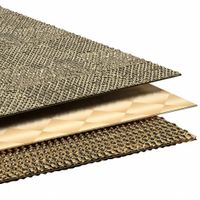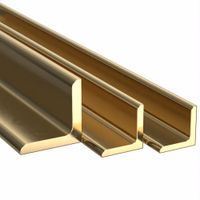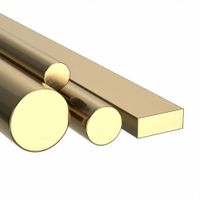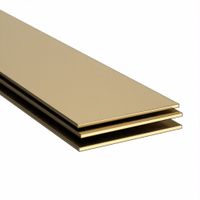Call +(254) 703 030 000 / 751 483 999 / 721 704 777
- Home
- Raw Materials
- Metals
- Brass
.....Read More
Frequently Asked Questions
What is brass made of?
Brass is an alloy primarily composed of copper and zinc. The proportions of these two metals can vary to create different types of brass with distinct properties. Typically, brass contains about 60-70% copper and 30-40% zinc. The variation in the copper-to-zinc ratio allows for a range of brasses with varying mechanical and chemical properties, making it suitable for diverse applications.
In addition to copper and zinc, brass may also contain small amounts of other elements to enhance specific characteristics. For example, lead is sometimes added to improve machinability, while tin can be included to increase corrosion resistance. Other elements like aluminum, iron, manganese, and silicon may also be added to achieve desired properties such as increased strength, hardness, or color variations.
The process of making brass involves melting the copper and zinc together in a furnace. Once the metals are molten, they are thoroughly mixed to ensure a uniform composition. The molten alloy is then poured into molds to form ingots or other shapes, which can be further processed through rolling, extrusion, or other methods to create the final product.
Brass is valued for its workability, durability, and attractive appearance. It is commonly used in applications such as musical instruments, decorative items, plumbing fixtures, and electrical components. Its resistance to corrosion and low friction make it ideal for use in environments where these properties are essential. Additionally, brass's acoustic properties make it a preferred material for musical instruments like trumpets and trombones.
What are the properties of brass?
Brass is an alloy primarily composed of copper and zinc, with varying proportions to achieve different mechanical and electrical properties. It is known for its distinct yellowish-gold appearance and is often used for decorative purposes. Here are the key properties of brass:
1. **Corrosion Resistance**: Brass exhibits excellent resistance to corrosion, particularly from seawater and other chloride solutions, making it suitable for marine applications.
2. **Malleability and Ductility**: Brass is highly malleable and ductile, allowing it to be easily shaped, bent, and formed into various products without breaking.
3. **Thermal Conductivity**: It has good thermal conductivity, which makes it useful in applications requiring efficient heat transfer, such as radiators and heat exchangers.
4. **Electrical Conductivity**: While not as conductive as pure copper, brass still offers decent electrical conductivity, making it suitable for electrical components and connectors.
5. **Acoustic Properties**: Brass has favorable acoustic properties, which is why it is commonly used in musical instruments like trumpets, trombones, and saxophones.
6. **Antimicrobial Properties**: Brass has natural antimicrobial properties, which help reduce the growth of bacteria and other microorganisms on its surface.
7. **Strength and Hardness**: The strength and hardness of brass can vary depending on the zinc content and other alloying elements. Generally, it offers a good balance of strength and workability.
8. **Low Friction**: Brass has a low coefficient of friction, making it ideal for applications involving moving parts, such as gears and bearings.
9. **Non-Magnetic**: Brass is non-magnetic, which is beneficial in applications where magnetic interference must be minimized.
10. **Aesthetic Appeal**: Its bright, gold-like appearance makes brass a popular choice for decorative items, jewelry, and architectural elements.
These properties make brass a versatile material used in a wide range of industries, including plumbing, electrical, musical instruments, and decorative arts.
How is brass used in industrial applications?
Brass, an alloy of copper and zinc, is widely used in industrial applications due to its unique properties such as corrosion resistance, machinability, and thermal and electrical conductivity. In the plumbing industry, brass is commonly used for fittings, valves, and pipes because it resists corrosion from water and is easy to mold into various shapes. Its antimicrobial properties also make it suitable for water supply systems.
In the electrical industry, brass is used for connectors, terminals, and switches due to its excellent electrical conductivity and resistance to sparking. This makes it ideal for use in hazardous environments where sparks could ignite flammable gases.
The automotive industry utilizes brass for components such as radiators, heat exchangers, and various engine parts. Its thermal conductivity and resistance to corrosion make it suitable for these applications, ensuring efficient heat transfer and longevity.
In the manufacturing sector, brass is used for gears, bearings, and bushings. Its low friction and wear resistance properties make it ideal for components that require smooth operation and durability.
Brass is also used in the production of musical instruments like trumpets and trombones due to its acoustic properties, which produce a rich, resonant sound. Additionally, its aesthetic appeal and ease of casting make it popular for decorative hardware and architectural elements.
In marine applications, brass is favored for its resistance to saltwater corrosion, making it suitable for ship fittings, propellers, and marine fasteners.
Overall, brass's versatility, durability, and resistance to environmental factors make it an essential material in various industrial applications, contributing to the efficiency and longevity of products across multiple sectors.
What are the different forms of brass available?
Brass, an alloy of copper and zinc, is available in various forms, each tailored for specific applications due to its unique properties. Here are the primary forms of brass:
1. **Sheet and Plate**: Brass sheets and plates are flat pieces used in architectural applications, decorative items, and industrial components. They vary in thickness and are often used for their aesthetic appeal and corrosion resistance.
2. **Bars and Rods**: These are solid, elongated pieces of brass available in different shapes such as round, square, and hexagonal. They are commonly used in machining and manufacturing components like gears, valves, and fasteners.
3. **Tubes and Pipes**: Brass tubes and pipes are hollow cylindrical forms used in plumbing, heat exchangers, and musical instruments. They offer excellent corrosion resistance and thermal conductivity.
4. **Foil**: Brass foil is a very thin sheet of brass, used in applications requiring flexibility and conductivity, such as in electronics and decorative arts.
5. **Wire**: Brass wire is used in electrical applications, jewelry making, and as a binding material. It is valued for its strength, conductivity, and resistance to corrosion.
6. **Castings**: Brass castings are produced by pouring molten brass into molds. They are used for complex shapes and components in plumbing, marine hardware, and decorative items.
7. **Extrusions**: Brass extrusions are formed by forcing brass through a die to create specific cross-sectional shapes. They are used in construction, automotive, and aerospace industries.
8. **Powder**: Brass powder is used in powder metallurgy and as a raw material for producing sintered components. It is also used in decorative applications and as a filler material.
Each form of brass is chosen based on the required mechanical properties, aesthetic appeal, and specific application needs.
How does brass resist corrosion?
Brass resists corrosion primarily due to its composition and the formation of protective oxide layers. Brass is an alloy of copper and zinc, and sometimes includes small amounts of other elements like tin, lead, or aluminum. The copper content in brass plays a crucial role in its corrosion resistance. When exposed to the environment, copper reacts with oxygen to form a thin, stable layer of copper oxide on the surface. This oxide layer acts as a barrier, preventing further oxidation and protecting the underlying metal from corrosion.
Additionally, the zinc in brass contributes to its corrosion resistance by forming its own protective oxide layer. Zinc oxide is less stable than copper oxide but still provides a degree of protection. In some brass alloys, the presence of tin or aluminum can enhance corrosion resistance by forming additional protective layers or by improving the stability of the existing oxide layers.
Brass is particularly resistant to corrosion in non-acidic, moist environments, making it suitable for applications like plumbing, marine hardware, and decorative items. However, in environments with high acidity or salinity, such as seawater, brass can undergo a process called dezincification, where zinc is selectively leached out, leaving behind a porous copper structure. To combat this, dezincification-resistant (DZR) brass alloys are used, which include small amounts of elements like arsenic or antimony to inhibit the process.
Overall, the combination of copper and zinc, along with the potential addition of other elements, allows brass to form protective oxide layers that significantly enhance its resistance to corrosion, making it a durable and reliable material for various applications.
What are the advantages of using brass in manufacturing?
Brass, an alloy of copper and zinc, offers several advantages in manufacturing. Its excellent machinability allows for easy shaping and forming, reducing production costs and time. Brass exhibits good corrosion resistance, making it ideal for applications exposed to moisture and various chemicals, such as plumbing and marine environments. Its low friction coefficient and non-sparking properties make it suitable for use in fittings and tools in explosive atmospheres.
The alloy's thermal and electrical conductivity is beneficial in electrical components and heat exchangers. Brass's aesthetic appeal, with its gold-like appearance, is favored in decorative applications, including musical instruments and architectural elements. It is also highly recyclable, supporting sustainable manufacturing practices.
Brass's versatility is enhanced by varying its composition, allowing manufacturers to tailor its properties for specific applications, such as enhancing strength or ductility. Its antimicrobial properties are advantageous in healthcare and food processing industries, reducing the risk of bacterial contamination.
Overall, brass's combination of mechanical properties, corrosion resistance, aesthetic appeal, and versatility makes it a preferred material in diverse manufacturing sectors.
How do you choose the right grade of brass for a specific application?
To choose the right grade of brass for a specific application, consider the following factors:
1. **Mechanical Properties**: Determine the required strength, hardness, and ductility. For high-strength applications, use brass with higher zinc content, like C260 (Cartridge Brass). For applications needing good formability, C230 (Red Brass) is suitable.
2. **Corrosion Resistance**: Assess the environment. For marine or corrosive environments, use naval brass (C464) or aluminum brass (C687) due to their superior corrosion resistance.
3. **Machinability**: If the application involves extensive machining, choose free-machining brass like C360, which contains lead for improved machinability.
4. **Electrical and Thermal Conductivity**: For electrical applications, use brass with high copper content, such as C220 (Commercial Bronze), which offers good conductivity.
5. **Aesthetic Requirements**: For decorative purposes, consider the color and finish. C280 (Muntz Metal) offers a golden color, while C230 (Red Brass) provides a reddish hue.
6. **Cost**: Balance performance with budget constraints. Higher copper content generally increases cost, so select a grade that meets performance needs without unnecessary expense.
7. **Weldability and Joinability**: If welding or soldering is required, choose a brass grade with lower lead content to avoid issues with joint integrity.
8. **Regulatory and Safety Standards**: Ensure compliance with industry standards and regulations, especially for applications involving potable water or food contact, where lead content is restricted.
9. **Availability**: Check the availability of the brass grade in required forms (sheets, rods, etc.) and sizes to ensure timely procurement.
By evaluating these factors, you can select the most appropriate brass grade for your specific application, ensuring optimal performance and cost-effectiveness.





